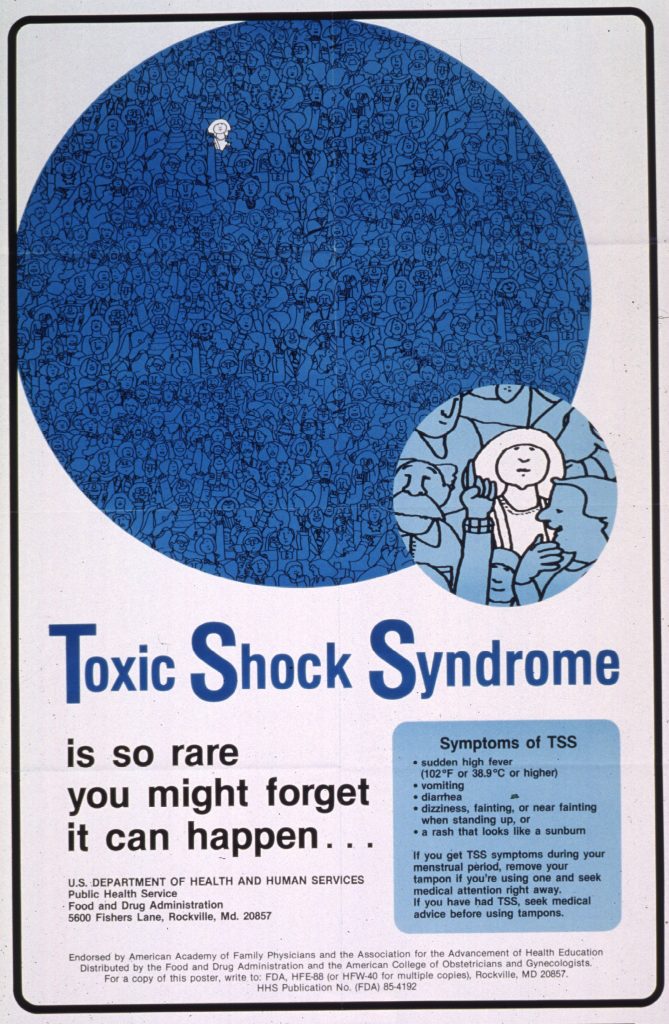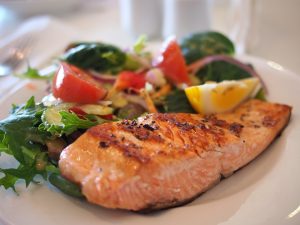25 Home Remedies for Toxic Shock Syndrome
Toxic shock syndrome (TSS) is an incredibly rare condition, but it is highly serious and can affect a number of systems in the body at once. It’s caused by an immune reaction to bacterial toxins. Thankfully it can be treated, but you should always see a doctor if you notice any of the symptoms as it can be fatal if left untreated. While it is difficult to treat at home, there are a number of home remedies for toxic shock syndrome and its prevention.
Symptoms
Symptoms can include any or all of the following. If you notice any of these symptoms, see a doctor to be properly diagnosed. Once diagnosed, you can use the home remedies for toxic shock syndrome in this article, along with whatever your doctor prescribes, to treat your symptoms.
- Sudden high fever
- Dizziness
- Low blood pressure
- Vomiting
- Diarrhea
- Muscles aches
- Confusion
- Seizures
- Reddening of the eyes
- Swelling in the mouth or throat
- Rash on the palms of your hands or soles of your feet
- Headaches
Causes
Approximately half of all cases of TSS are caused by a type of bacteria common in menstruating women. Although women of menstruating age are therefore more at risk, TSS can affect men and children too, especially those who have fresh, open wounds or who have recently undergone surgery.
If left untreated, the condition can cause major organ damage and could even be fatal. In fact, almost fifty percent of cases are thought to be deadly. Thankfully there are a number of things you can do to naturally reduce your risk of developing TSS.
Home Remedies for Toxic Shock Syndrome

This old poster from the FDA outlines the dangers of TSS
-
Keep Wounds Clean
If you get an open wound, you should keep it clean, dry, and bandaged. This will prevent bacteria from getting into the wound and thus reduces your risk of developing TSS. You should also make sure that you change your bandages or dressing regularly as this will further reduce the risk of infection. Should you notice any signs of infections, such as redness, pain or swelling, you should speak to your doctor immediately. Make sure to change your bandages regularly.
-
Take Care During Menstruation
Be careful when using tampons, diaphragms, or contraceptive sponges. Inserting these devices can increase your risk of developing TSS as you make yourself more vulnerable to bacterial infection. Ideally, you should avoid over-using tampons at all as they are a perfect breeding ground for bacteria. You should especially avoid using tampons if you have suffered from TSS in the past as recurrences are common.
With improvements made to the design of modern tampons, they present less risk now than with older tampon designs, but you should still take caution when using them.
-
Alternate Tampons and Sanitary Pads
To avoid over-using tampons, you should make sure you alternate between using them and using sanitary pads. Use a sanitary pad on days when your flow is lighter. Lighter flows often have less need for a tampon, so by using a pad instead you can help to lower your risk of infection.
-
Change Your Tampon Frequently
To reduce your risk of bacterial infection and therefore your risk of TSS you should make sure you change your tampon frequently. Changing every four to six hours is the recommended ideal. If your flow is particularly heavy you may want to change your tampon more regularly.

Leave in a tampon for no more than eight hours at a time
-
Use A Low Absorbency Tampon
Using the lowest absorbency tampon possible is another great way to reduce your risk of TSS. It can help prevent bacteria entering the body and thus reduce the body from being exposed from bacterial toxins.
-
Only Use Tampons When Needed
If you’re not on your period, don’t use tampons at all. If you do, you could be exposing unnecessarily exposing your body to bacteria.
-
Store Your Tampon Correctly
The way you store your tampons is key to reducing the rate bacteria may grow in them. Keep them in a cool and dry place to stop bacteria from growing and spreading. This will reduce the risk of bacteria getting into the body and causing TSS.
-
Maintain Good Hygiene
Washing your hands before or after inserting a tampon, going to the toilet or coming into contact with your genitals in any way will help stop the spread of bacteria and reduce your risk of TSS.

Make sure to shower often as well
-
Vitamin D
Vitamin D is crucial to your immune system working as effectively as possible. A number of studies have specifically shown a link between high vitamin D levels and a reduced occurrence of bacterial infections. You can increase the level of vitamin D in your body by getting more exposure to sunlight (although make sure you protect your skin when you’re out in the sun). You could also try taking vitamin D supplements or including more vitamin D-rich foods into your everyday diet.
-
Probiotics
Probiotics are another great way to boost your immune system and help it fight bacterial infection, making it a great home remedy for preventing TSS. Probiotics help to increase the levels of good bacteria in your gut which helps to support your immune system and increase the absorption of minerals and nutrients needed for a healthy body. You can increase your intake of probiotics by eating more cheese or probiotic yogurts.
-
Salmon
Salmon is a rich source of vitamin D. As a result, it helps to improve your immune system and fight off the potential causes of toxic shock syndrome.

Grilled or baked salmon is the healthiest form of this fish
-
Herring
Herring is a great source of vitamin D because it can be eaten raw, canned, smoked or pickled and still provide enough of the nutrient. As such, eating herring at least once a week can help to significantly improve your immune response and therefore make it easier for your body to fight off the potential causes of TSS.
-
Sardines
Sardines are another oily fish which provides a great source of vitamin D. As such, they can help to boost your immune system and make it more efficient at fighting bacterial infections.
-
Cod Liver Oil
Cod liver oil is a popular supplement because it works as a home remedy to many conditions, including the prevention of TSS. It’s also a great way to get more vitamin D if you’re not a fan of eating fish. Not only that, but it’s also a great source of vitamin A too, another vitamin which helps to improve your immune system.
-
Canned Tuna
Canned tuna is hugely versatile. It can be used in casseroles, pasta, or even in sandwiches. This makes it a great way to increase your vitamin D levels and fight off bacterial infections which may otherwise cause TSS.
-
Oysters
More commonly recognized as an aphrodisiac, oysters are also a great source of vitamin D. They’re a type of saltwater clam which can be eaten as a low calorie but a highly nutritious meal. Their high vitamin D content helps to fight off a bacterial infection and prevent TSS.

Eat fresh oysters to get the most out of this home remedy
-
Shrimp
Shrimp is a hugely popular form of shellfish thanks to its delicious taste and low-fat quantity. It’s also another great source of vitamin D and therefore a great home remedy for preventing toxic shock syndrome.
-
Egg Yolks
For those who don’t eat fish, egg yolks make a great alternative source of vitamin D. Eating whole eggs is also beneficial, although it’s the yolk where most of the vitamin D is found. You can try eating more omelets or boiled eggs as a way to increase your vitamin D intake and lower your risk of TSS.
-
Mushrooms
Mushrooms are one of the only plant-based sources of vitamin D. This makes them a great home remedy for preventing TSS if you’re a vegan.
-
Cow’s Milk
Cow’s milk is the most commonly drunk form of milk. It’s also naturally rich in vitamin D which helps to increase your immune response and fight off potential bacterial infections. This helps to make cow’s milk one of the best home remedies for preventing TSS.

Eating other dairy products– like cheese and yogurt, can also help
-
Soy Milk
Because vitamin D is found most commonly in animal products, vegetarians and vegans can often struggle to get enough of the vitamin. This can leave them at risk of a weakened immune system and therefore more vulnerable to TSS. Soy milk is often fortified with vitamin D, which makes it a great option for those who don’t consume animal products.
-
Orange Juice
Around 75% of people across the entire world are lactose intolerant. This means they are unable to get their vitamin D through milk or dairy products. Many orange juices are fortified with vitamin D which can make them a great alternative source of vitamin D for these people.
-
Cereal and Oatmeal
A number of commercial cereals and instant oatmeal are fortified with vitamin D. This makes them a great home remedy for preventing TSS as it helps to increase your immune response and lower your vulnerability to bacterial infections. They’ll usually contain a lower concentration of vitamin D than natural sources, but they can still be useful.
-
Garlic
Garlic is well known for its strong antibacterial properties. It is often recommended as a way to fight bacteria, particularly in the genital area. Taking one garlic tablet a day could, in fact, reduce your risk of developing a bacterial infection which in turn reduces your risk of TSS.
-
Tea Tree Oil
Tea tree oil is an essential oil which naturally has very powerful antibacterial and antifungal properties. These properties make it great at fighting bacterial infections and assisting your immune system in preventing the development of TSS.
You will need to dilute the tea tree oil before using it as it can cause irritation to the skin, but it can be used to cleanse your genitals or open wounds to prevent infection once diluted. Mix the tea tree oil with coconut oil (a good example of a carrier oil) and apply it to your wound or genitals. Many people are allergic to tea tree oil, so it’s always best to try this remedy on a discreet area of the skin first.
You could also add a few drops of tea tree oil to your bath water and bathe in it. This will help fight any bacteria in your genitals or wounds.

100% PURE AROMA Essential oils 6-pack (Eucalyptus, lavender, lemon grass, orange, peppermint, and tea tree). ($6.95)
Which of these home remedies for toxic shock syndrome will you try? Comment below!
References
https://www.webmd.com/women/guide/toxic-shock-syndrome-treatment-prevention
https://www.healthline.com/health/toxic-shock-syndrome#prevention
https://www.healthline.com/nutrition/9-foods-high-in-vitamin-d
https://www.healthline.com/health/home-remedies-forbacterial-vaginosis#tea-tree-oil
Toxic shock picture: https://collections.nlm.nih.gov/catalog/nlm:nlmuid-101438566-img








